Posts
How-To: Make a 3D Photo

The above chess picture is a left/right merging for magenta/green 3D glasses. Below is a bike for red/cyan glasses.
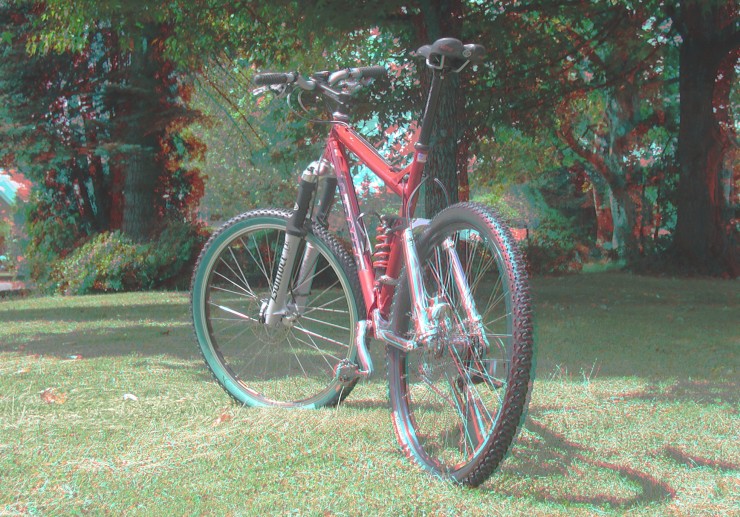
Use Magenta/Green 3D glasses to view the chess photograph or Red/Cyan 3D glasses to view the bike photograph. Click on an image for a larger view. 3D quality depends on your monitor’s color settings. The chess photo ghosts a little on my Macbook screen, but appears perfect on an external LCD.
Items list
- Digital camera
- Tripod for digital camera
- Photo software supporting layers such as Photoshop or Gimp
- An interesting subject for 3D
- Red/Cyan or Green/Magenta 3D glasses.
You can find 3D glasses with home movies such as Coraline, with activity books for children, or make your own by purchasing supplies at an art store. Gimp is available for free, which the instructions here will follow. Software that tries to do the modifications for you exist, but doing it yourself allows greater control over the results.
The Science: How do 3D glasses work?
Each lens has different complimentary colors acting as a filter for each eye. Colors are complimentary when the combined color is neutral such as red and cyan. Two photos taken from slightly different vantage points (like your eyes) aimed at the same point are colorized opposite of the respective colored lens. For example, my green/magenta glasses has green over the left eye so the photo taken on the right side needs to be colorized green. The green lens filters out the green portions of the image so the left eye does not see the right vantage point. You could also put the two photos side-by-side, left image on the right, and cross your eyes. The 3D glasses make it easier looking at a single combined image. Other 3D glasses technology includes shutter glasses viewing flashing images and scanning glasses for viewing images stacked in narrow lines. All work on the same principle, one lens blocks what the other eye should see. The rest is depth perception.
Continue reading...Volcano: Then and Now
In “Remember the Volcano,” I share the story of my first Mt. St. Helens blast area visit. Here are a pair of the photo comparisons of the same locations. The older photos were taken in 1983 and the recent photos in 2009, all by Jerry Shrock. Notice the growth after 26 years.
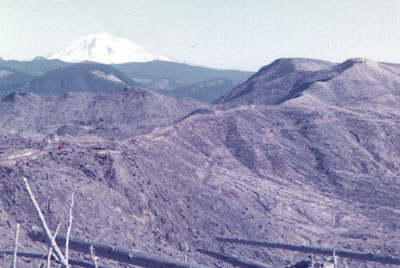
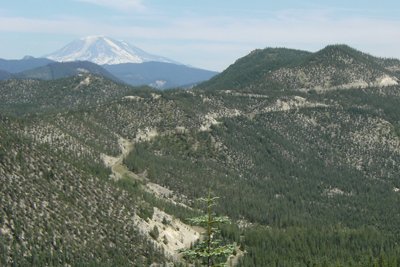
The above photos look eastward at Mt. Adams where the 2009 photo is from a lower vantage point. In 1983, there was a stand serving hot-dogs and cool drinks for those hiking up the unfinished road to view the volcano. Now there is a paved parking area. Bring your own hot-dogs.
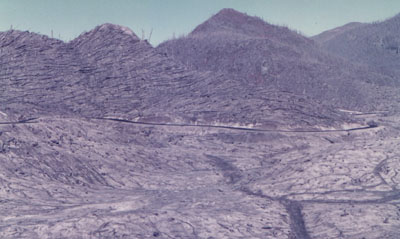
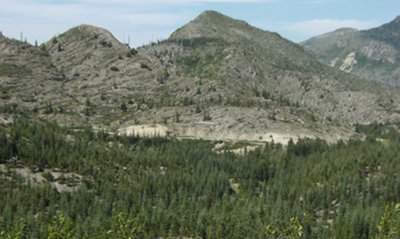
These photos were taken along Road 99 seen as a black ribbon in the above photos. The road continues to the left passing this viewpoint on the way to Windy Ridge.
I recall my mother stating it would take twenty years for the land to recover. That seems like a very long time to a ten year-old. Looking back, the passing years seem like a brief moment. The forest agrees. Nearly thirty years after the blast, new growth follows the creeks, while the ridges appear much the same. Loggers cleared many areas, but left some sections untouched for nature to take care of all on her own.
When visiting Mt. St. Helens bring hiking gear, camera, and curiosity. And hot-dogs. Please visit Mount St. Helens National Volcanic Monument website for more information.
Future Stories
What will happen to stories?
This is the question Michael Chabon poses in “Manhood for Amateurs: The Wilderness of Childhood” in The New York Review of Books. He points out that the current generation of parents are overprotective, shuttling their children in cars, never allowing them to go outside and explore. He claims that people read and write stories because they have once been explorers.
Many stories for children are about children exploring on their own from The Lion, the Witch and the Wardrobe to Un Lun Dun. Many adults today remember exploring on their own without constant oversight. We had rules, but we were allowed to roam the neighborhood, meet other children, and imagine new worlds. A writer draws from experience, and writing a good adventure story requires familiarity with adventures.
I still like to explore. I explore my city, the mountains, the universe through books and telescopes. And I explore imagined worlds by reading and writing. My parents encouraged exploration by pushing me outside and taking me to visit strange landscapes like the aftermath of a volcanic eruption. I also remember exploring books, reading about astronomy, famous explorers, and volcanos. Reading encourages exploration, asking questions, and exploration encourages more reading. Do children today explore? Do they exercise their imaginations?
The stories of tomorrow are safe. People still share the tales of their lives. Some stories may appear in new media such as YouTube, Storybird, or interactive games, but they will be much like the stories we’ve always known. Exploration has been a part of humanity since the beginning. We are too curious. We want to know the reasons why. Periods of discovery wax and wane. Someday people may even begin colonizing the solar system in a period of great exploration like the sailing ships of the past discovering new lands across the sea. Even if children today do not explore, some will grow up and discover exploring. They will encourage their children to explore and ask the hard questions. And write stories from their imaginations.
I can’t wait to read the future stories.
Trying out helmet camera
Mountain biking down single-track trail enjoying a beautiful summer day along 8-mile creek near Mt. Hood.
http://www.youtube.com/watch?v=pm_37qo-lRk
The helmet camera is VIO POV 1.5. Two lessons I learned: I need to find a better place to hide the microphone from the wind, and find a rider to follow. Next time I will experiment with other camera positions.
Twitter Micro-Fiction
Twitter gives authors a means to share micro-fiction constrained by the 140-character limit, an exercise in conciseness. Fiction across Twitter appears as poetry, serials, and single micro-fiction tales including a few six-word stories. Tweet the Meat offers a dollar—generous considering the word count—for publishing horror micro-fiction.
My goal is to tweet a few micro-fiction stories each week. They mix with other posts, so here are a few of my attempts including two of exactly 140 characters:
For other micro-fiction, see the following authors: @arjunbasu, @twae sometimes incorporates physics, @midnightstories posts precisely at midnight central time, @trapphic has a web page on micro-fiction, and @VeryShortStory.
Try a 140-character story.